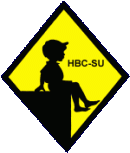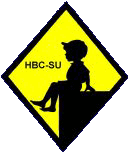
Schools have differed greatly from country to country and over time concerning school uniforms and dress codes. Some countries have many schools with required uniforms. Some countries even mandate uniforms. Other countries have few schools with unifoirms. Some countries are now reconsidering the issue of uniforms. Some countries have schools that have begun to introduce uniforms in recent years. In those countries, public schools often adopted a suggested unifom, but do not require it. In some of the countries with traditional uniforms, two of the greatest controversies concerning boys has been regulations governing school caps and pants styles.
School uniform regulations have varied widely for different garments. Many countries have schools with that do not require uniforms. Other countries have many schools that do require uniforms. There are even countries where the Government has nandated a single natuioinal uniform. More commonly it was an uindividual school choice. Regulations have varied betwwen countries and within countries. There have also been major differences over time. Some countries did not have real uniforms, but boys commonly woire school caps. Other countries had schools with very strict uniform rquiresments including virtually all a students outer garments.
There are wide differences from country to country as well as among schools in various countries as to rules about school uniforms. We have collected some information from schools around the woirld. This is complicated somewhat because of the many different languages involved. Some sample uniform regulations in specific countries overtime are
noted in the following links:
Australian school uniforms
and regulations through the 1950s were much like British styles. Since the 1960s uniforms have become more casual. Most
schools do insist on uniforms and the regulations concerning those uniforms can be quite detailed. Most Australian schools are much more relacced about school uniform in the 1990s than in previous years.
Belgian boys once almost universally wore school smocks which the schools once required. Few schools, however, have required school uniforms with the exception of catholic schools. Many of the sdchools
until the 1980s-90s required that boys wear short pants, in some cases even the older boys. Some schools were quite strict about the shorts, enforcing regulations about the length of the shorts.
Curiously while English
boys in the 1970s at some schools were arguing to be allowed to wear long pants, some American boys were asking for the
right to wear shorts. Not only has the style of the appropriate school trousers varied, but the schools have had various ways of
determining who had to wear short pants as well as determining what the appopriate cut was. Schools have had various ways of
assessing the proper length or who could wear longs. In most cases it was by grade or form, but in some cases by age or even
height. Schools and students have also disagreed over the length of the shorts. Schools have had rules in some cases prohibiting
to long or to short shorts or other details such as material.
Irish schools had the same uniform styles as English schools. Regulations about uniforms tended to be comparable. One Irish contributor reports, "I was nearly 12 when I made the transition to long trousers at school. I was short for my age and the school I went to in Belfast Northern Ireland in the early 1970s had a unifom regulation that kept boys in shorts till they reached a certain hieght. I however protested in my final year at the school as I was the only boy in my class in shorts. My parents were very progreesive and pleaded to the school to let me wear longs the eadmaster finally gave in. I started my next school in 1974. It was a coed school in the south of Ireland. I remember that the headmaster wrote a letter to the parents of first year boys informing them that the boys should wear a unifrom of short trousers. This however didn't wash and was not persued any further.
French boys once almost universally wore school smocks which the schools once required. Few schools, however, have required school uniforms with the exception of catholic schools.
Japanese schools have a variety of uniform regulations, often strictly enforced. A Japanese contributor reports that his elementary school required all the boys to wear short pants
through the year, although there was no uniform. A boy could only wear long pants if he had come down with something, and he had to bring a note from the doctor verifying that he was indeed ill. The contributor grew up in Okinawa which has quite
a mild winter. He was in elementary school from about 1977 through circa 1983.
|
New Zealand has long been
regarded as "more British than the British," clinging to conservative aspects of the Home Country no longer in effect. Most New
Zealand secondary schools do insist on uniforms. Most parents think that uniforms are appropriate and a positive contribution to
the overall educational effort.
Scottish school uniforms and regulations through the 1950s were much like British styles, except the dress uniform at most private Scottish schools is a tweed jacket and kilt.
Curiously while British boys in
the 1970s at some schools were arguing to be allowed to wear long pants, some American boys were asking for the right to
wear shorts. Schools have had various ways of assessing the proper length or who could wear longs. In most cases it was by
grade or form, but in some cases by age or even height. Schools and students have also disagreed over the length of the shorts.
Schools have had rules in some cases prohibiting to long or to short shorts or other details such as material.
Related Chronolgy Pages in the Boys' Historical Web Site
[Late 19th century]
[The 1930s]
[The 1940s]
[The 1930s]
[The 1940s]
[The 1950s]
[The 1960s]
[The 1970s]
[The 1980s]
Related Style Pages in the Boys' Historical Web Site
[Long pants suits]
[Short pants suits]
[Socks]
[Eton suits]
[Jacket and trousers]
[Blazer]
[School sandals]
Navigate the Boys' Historical Clothing Web Page
[Return to Main school uniform page]
[Introduction]
[Activities]
[Biographies]
[Chronology]
[Cloth and textiles]
[Clothing styles]
[Countries]
[Topics]
[Bibliographies]
[Contributions]
[FAQs]
[Glossaries]
[Images]
[Links]
[Registration]
[Tools]
[Boys' Clothing Home]
